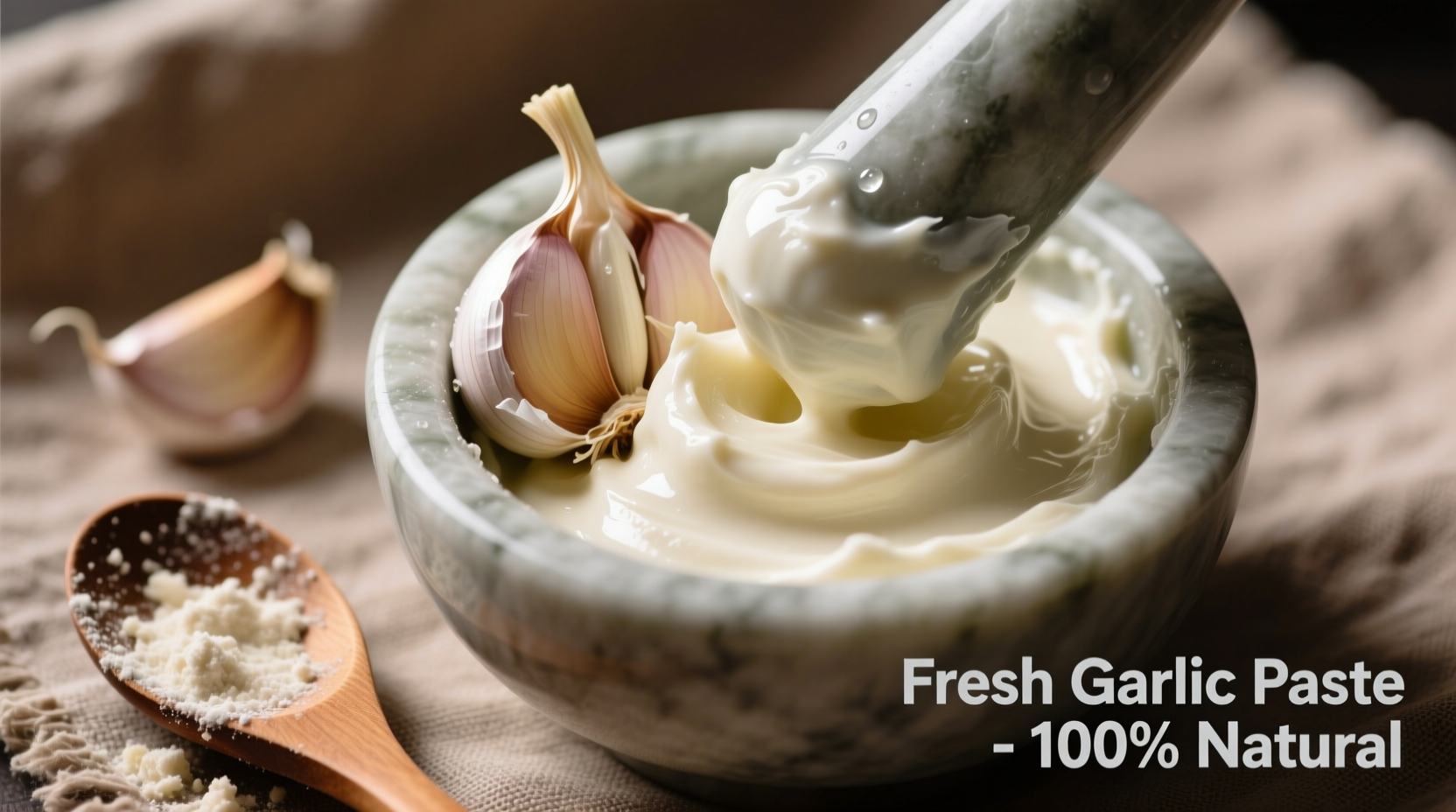Creating professional-quality garlic paste at home takes less than five minutes and transforms your cooking. Unlike commercial versions loaded with preservatives, fresh garlic paste delivers vibrant flavor that elevates everything from marinades to sauces. This guide reveals the chef-approved method used in top kitchens worldwide, complete with storage techniques that maintain freshness for weeks.
Why Homemade Garlic Paste Beats Store-Bought
Commercial garlic pastes often contain stabilizers and preservatives that dull the vibrant flavor profile of fresh garlic. When you make your own, you control the quality and intensity. According to the FDA Food Safety Guidelines, homemade versions without added water or improper storage conditions eliminate botulism risks associated with garlic-in-oil products.
| Factor | Homemade Paste | Store-Bought Paste |
|---|---|---|
| Shelf Life | 3-4 weeks refrigerated | 2-3 months (with preservatives) |
| Flavor Intensity | Bright, complex notes | Muted, one-dimensional |
| Cost per Ounce | $0.35 | $0.85 |
Essential Tools and Ingredients
Select firm, plump garlic bulbs with tight skins—avoid any with green sprouts or soft spots. The USDA Agricultural Research Service confirms that fresh garlic contains higher allicin levels, the compound responsible for both health benefits and pungent flavor that develops when garlic is crushed.
For equipment, choose based on your needs:
- Food processor (best for large batches)
- Mortar and pestle (traditional method for superior texture)
- Microplane grater (quick small-quantity solution)

Step-by-Step Preparation Guide
Follow these professional kitchen techniques for perfect garlic paste every time:
- Peel efficiently: Place cloves in a sealed container and shake vigorously for 30 seconds to loosen skins
- Prep properly: Remove any green sprouts which cause bitterness
- Process correctly: Combine 1 cup garlic with 1 tbsp oil and pinch of salt in processor
- Blend thoroughly: Process 60-90 seconds, scraping sides as needed
- Adjust texture: Add additional oil (1 tsp at a time) if too thick
For extended freshness, the Journal of Food Science recommends adding 1/4 teaspoon citric acid per cup of paste to prevent oxidation and maintain the bright white color during refrigeration.
Storage Solutions for Maximum Freshness
Proper storage determines how long your garlic paste remains flavorful and safe. Follow these evidence-based methods:
- Refrigeration: Store in airtight container with thin oil layer on top (3-4 weeks)
- Freezing: Portion into ice cube trays then transfer to freezer bags (4-6 months)
- Preservation: Add 1 part lemon juice to 4 parts paste for extended shelf life
Always use clean utensils when handling stored paste to prevent contamination. Discard if you notice any pink discoloration, which indicates bacterial growth.
Culinary Applications and Substitutions
Homemade garlic paste works as a 1:1 substitute for minced garlic but delivers more consistent flavor distribution. Use it to:
- Enhance salad dressings without chunky bits
- Create uniform flavor in meat rubs
- Boost sauce bases without texture interference
- Quickly flavor roasted vegetables
When substituting in recipes, remember that 1/2 teaspoon of paste equals one fresh clove. The concentrated flavor means you'll use less than you would with fresh garlic while achieving superior taste integration.
Troubleshooting Common Issues
Even simple preparations can encounter problems. Here's how to fix them:
- Separation: Re-blend with 1/2 teaspoon additional oil
- Bitterness: Add small amount of honey or lemon juice to balance
- Discoloration: Ensure no water contact during preparation
- Weak flavor: Use younger garlic bulbs with higher allicin content
For optimal flavor development, let the paste rest for 10 minutes after preparation before using. This allows the enzymatic reaction that creates garlic's characteristic aroma to complete, as documented in food chemistry research.











 浙公网安备
33010002000092号
浙公网安备
33010002000092号 浙B2-20120091-4
浙B2-20120091-4